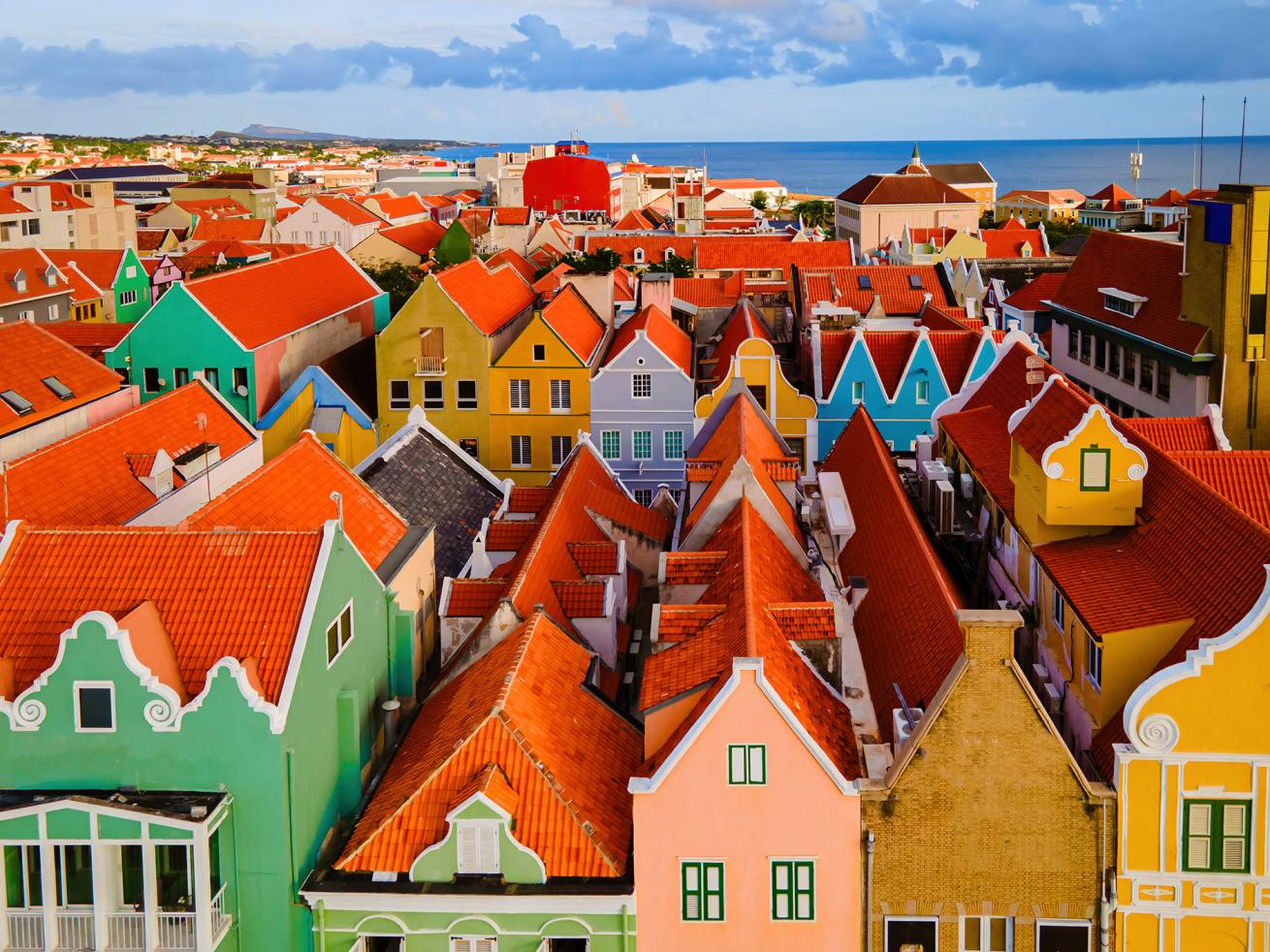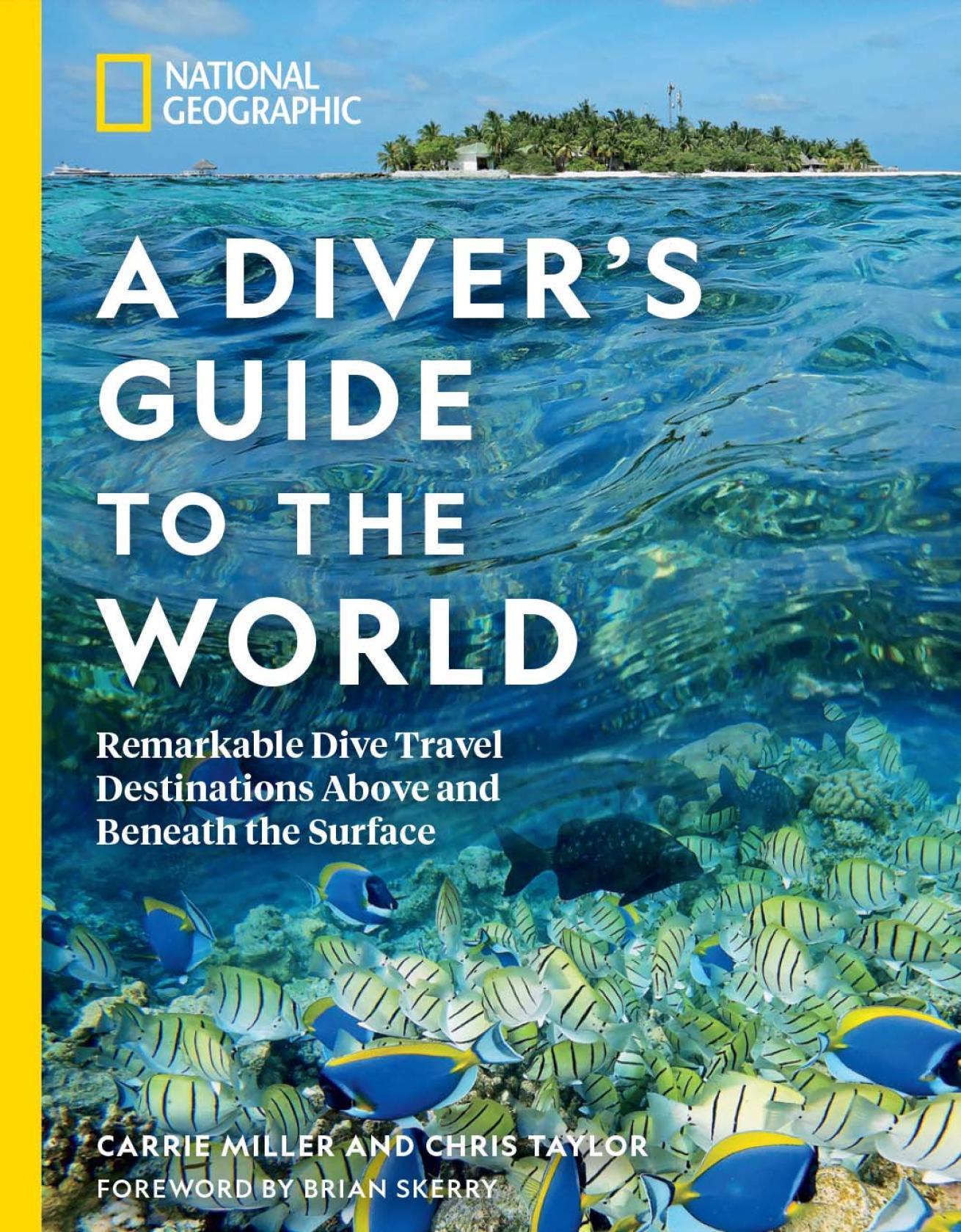Guide to Diving in Curacao

Shutterstock.com/fokke baarssenCuracao's vibrant capital of Willemstad, with its brightly colored buildings.
Curacao is a charmer. This little island (roughly twice the size of Washington D.C.) has a strong buccaneer feel to it. The trade winds still carry a waft of lawlessness, a knowing smile that makes Curacao a fun, foreign-feeling port to explore. From the brightly painted buildings—shocking pinks, sunshine yellows and turquoise blues—in the capital city of Willemstad, to the bonhomie of Curacaoans, this island will win you over, just as it did us.
In dive circles, Curacao is not as well-known as neighboring Bonaire, but it should be. Curacao has it all—reefs, walls, wrecks, night dives—but the island’s real party trick is a sea floor that drops steeply a few hundred feet from shore, making shore diving accessible and popular.
Related Reading: 30 Iconic Places to Dive in 2024
What wowed us, however, was the overall quality of the dive shops and the diversity of diving on offer. We dove with five of the island’s many operators and they were all excellent, which reflects the high standards and consistency of the dive industry here.
Most of the diving takes place on the West Coast, and the Northwest and Southwest are completely different from one another. It’s worth exploring all, and thanks to Curacao’s compact size, it’s easy to do so.
Chris TaylorA moray eel checks out divers in Curacao.
Take the Plunge
Curacao’s rocky beaches extend to fringing shallow reefs for around 160 feet before plummeting to steep walls exceeding 1,970 feet. The coral cover is in a relatively good state, especially in the Caribbean where bleaching events have been exceptionally prevalent. However, divers should expect to encounter areas affected by bleaching, as well as by stony coral tissue loss disease (SCTLD).
Tip: Follow the guidelines for diving in SCTLD-affected areas: Avoid diving infected areas and decontaminate your gear between dives. If you have any questions, speak to a local dive shop.
The Northwest Coast is quieter with calmer seas, mild currents and a permanent jetty for shore dives, plus boat options. A five-minute boat trip took us to Elvin’s Plane, a flat reef holding the wreck of a Fokker Fairchild 27 airplane, scattered by storms across the reef. Wrecks attract life, and this area was filled with huge bait balls of blue runner jacks, giant purple barrel sponges, colorful parrotfish and clouds of reef fish dining on surgeonfish eggs.
The Southwest Coast is more popular, offering reef, shore and wreck diving. Curacao is home to the Superior Producer, a large, upright wreck sitting at 108 feet near the cruise ship terminal. This 165-foot-long, upright cargo ship is one of the Caribbean’s most popular wrecks. It is also a favorite with large tarpon and barracuda . Divers can explore the exterior of the wreck on a guided group dive, and wreck-certified divers can penetrate the cargo holds with a private guide.
For a night dive with a twist, head out with Ocean Encounters on their house reef for a fluorescent night dive. They provide special UV dive lights and mask filters, which give a phosphorescent glow to certain corals and marine creatures.
Substation CuracaoChris and Carrie are all smiles in Substation Curacao’s minisub, which takes visitors to frontier depths of 1,000 feet/305 meters.
Dive Deeper
The ocean’s “twilight zone” is located between about 650 to 3,300 feet. It’s one of the most under-researched places on the planet and a frontier few people have seen.
One of the highlights of our entire journey, a delight for divers and non-divers alike, was taking a 90-minute tour with Substation Curacao in their mini-submarine (“Curasub”). It was a chance to dip a toe into deep-sea exploration.
In between its research outings, the Curasub takes visitors to depths of up to 1,000 feet, launching from its land-based port near Willemstad. It holds up to four passengers and one pilot.
Within five minutes we had descended farther than our deepest dives and were now in unknown territory. Marine snow (biological debris falling from higher in the water column) made it seem as if we were cruising through a snow globe. Our pilot reported that dolphins have been spotted at 300 feet and hammerhead sharks at 670 feet.
Tip: Book in advance. Submarine diving does not cause pressure changes in the body, which means you can dive later in the day. Ideal for non-divers or people who can’t dive. Some conditions apply, and stringent safety measures are followed.
Carrie MillerChris Taylor diving the Superior Producer, a large, upright wreck sitting at 108-feet.
Dig the Vibe
From mouth-watering meals to the Thursday night fun of Punda Vibes (a community-hosted street party), Curacao turns it on. Take a walking tour of the vibrant capital of Willemstad, a UNESCO World Heritage site, beginning with the eye candy of Handelskade, a Punda-side waterfront row of historical Dutch buildings painted in eye-watering colors.
Outside of Willemstad, outdoor adventure abounds. Try a lesson with Windsurfing Curacao on quiet Spanish Bay, suitable for absolute beginners to surfers with skills. Or hike the 1,230-foot Mount Christoffel in Christoffel National Park, a great way to experience the island’s desert-like vegetation.
Related Reading: Join the Pelagic Party in Byron Bay, Australia
NEED TO KNOW
When to Go: Temperatures average 89°F. Curacao is outside the hurricane belt, but November through March brings cruise ships and Willemstad can get crowded. Still, Curacao is a fantastic winter getaway.
Dive Conditions: On average, visibility is around 82 feet. Water temperatures are around 79°F in winter and 82°F in summer, and depths range from 49 to 108 feet. Beyond that, walls plunge beyond 1,970 feet. Suitable for divers of all levels. Experts will find challenges, beginners will find good instruction and encouragement and intermediate divers will be in heaven.
Operators: We dove with Caribbean Sea Sports, Curious 2 Dive, Go West Diving, Ocean Encounters and Scuba Lodge.
Travel Tips: Curacao receives regular flights from North America, South America and Europe. Walking and public transport will get you to most places in Willemstad. Rent a car for part of your stay: There is a lot to see outside the capital, and self-driving is easy.
Make a Difference: In their native Indo-Pacific range, lionfish are in balance with their environment. In the Caribbean and Atlantic, lionfish—an introduced species—have no natural predators. They’ve decimated native fish populations by more than 65 percent and reproduce at an astonishing rate (one female can lay two million eggs per year). Killing lionfish is crucial to marine conservation. What can you do to help?
- Hunt lionfish. Many dive shops offer educational lionfish hunting excursions.
- Eat lionfish. It’s delicious! (And safe.) Many restaurants in Curacao serve it.
- Buy lionfish jewelry. Lionfish Caribbean creates handmade jewelry from lionfish fins.
- Support research. The Smithsonian Institution in partnership with Substation Curacao are studying lionfish at depth, which have been spotted as deep as 800 feet.

To create their one-of-a-kind National Geographic book, A Diver’s Guide to the World: Remarkable Dive Travel Destinations Above and Beneath the Surface, dive travel experts Carrie Miller and Chris Taylor traveled to 50 inspirational locations around the world, spending more than 250 hours underwater. Their monthly column explores the world using a mix of chapter excerpts and exclusive behind-the-scenes stories. Their project, Beneath the Surface Media, uses storytelling and ocean travel to encourage conservation through exploration. For more, follow them on Instagram and Facebook.










